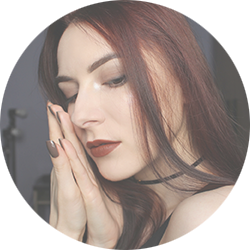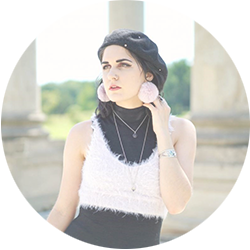







Welcome Back
Sign in to be closer to your community!
Follow other divas, like and comment
on their posts, message them, and see
who loved your posts!
Invalid username or password
You have not verified your account by clicking on the link we sent you via email. Please check your email folders (including your Spam folder) and click on the verify link sent.
Email is required
Password is required








Join FashionPotluck.com
Create your own profile in order to create content, follow other divas and like their posts, use our own messenger, and be a part of a growing international women community!
WELCOME TO OUR COMMUNITY
Fashion Potluck -
the first social media
platform for women.
You are free to read/watch & create content,
express your true self, and interact with others.
Join for free
Already a member? Log in here.
Purchase Alert
Dear Queen, you can only buy from one seller at the time. Please finish this purchase first in order to buy from another FP member
Comments
Please select one platform to continue
Please select one platform to continue
Please select one platform to continue
Please select one platform to continue
Please select one platform to continue
Please select one platform to continue
Please select one platform to continue
Please select one platform to continue
EDITOR APPROVED
You are wondering what is this 'Editor Approved'?
Well, this is pretty awesome! In order for the post to qualify and receive this accolade, it has to have a minimum of 700 words and two images (at least one original).
Receiving this accolade means two things: 1) Your content is amazing! Good job! 2) Your content qualifies for our monetization program. Every week two of the most read posts receive monetary rewards.
Have the badge & want to monetize your content?

FP-BLOG


In the 10th episode of FP Guru Series, we chatted with Sanne Schoenmaker, the Co-Founder of PARIOLI, the tailored fashion brand from The Netherlands.
Sanne and her family create tailored garments for women, according to their measurements. Women can choose a style from over 40 different designs and multiple colors, and get a customized garment. This is a unique approach to fashion, which offers sustainable solutions for women around the world.
What this podcast is about:
○ How was the idea of Parioli born?
○ Do you have a background in the fashion industry? Is experience in the fashion industry necessary if you want to start your own brand?
○ Do you have any tips for women who want to develop their own fashion brand?
○ What challenges did you face when you started?
○ Could you elaborate more on the sustainable aspect of Parioli?
○ Which fabrics are ideal for your body? Does it differ per body type?
○ Tips for creating a fashion business in the Netherlands.
Listen to the podcast here:

Podcast Transcription:
Una [00:00:01] Hello everyone and welcome to the Fashion Potluck Podcast session. Fashion Potluck is a social media platform where women can consume and create content. My name is Una, I'm the Content Manager Fashion Potluck. And I'm here with Julia, the Chief Marketing Officer of Fashion Potluck, and our guest for today, Sanne Schoenmaker, the Co-founder of a fashion store based in Amsterdam, Parioli.
Sanne [00:00:24] Hi.
Una [00:00:33] Welcome! Could you tell us a bit more about Parioli?
Sanne [00:00:33] Yes. Well, the idea originated from just my own frustration. I started working when it was I think around 20. I was still studying Economics at the time and I couldn't find anything to wear. And my mom had been sewing ever since she was five. So she's quite the expert. And we used to have this fabric market in it Utrecht where I was born and every Saturday I would go there and get fabrics and make things, and I just asked her to make me some things for work because I was really frustrated with what was in stores. And so she did it, and a lot of friends were very enthusiastic about it because they had the same problem. They start working at quite a young age but they didn't want to look like 80- year old grandmas. And they also didn't want to look like they went clubbing you know. So it's hard to find like the mix that it's still feminine, but also appropriate for business. And then I noticed that my mom's colleagues would come by, and my friends' colleagues would come by. And so many women got enthusiastic about this. And I was like OK, wow, well we could do something with this. And at that time we just let people design something and we would make it. But that's very...
Julia [00:01:42] When was that? What year?
Sanne [00:01:44] Oh that's a very good question. I think around 2012, or 2013. So that was like the really early beginning. We didn't have a company back then it was just our hobby basically. But I quickly noticed that there was a real demand for this. So we started expanding. And at first we would let people design their own thing, and they would pick their own fabric. But it's really hard to design a pattern like for one dress and only use it for that one dress. So at a certain point, it was like, this is too time-consuming. Especially because my mom was working more than full time at the company she started. So it was quite a lot to take on. And we decided on programming our patterns. So instead of hand drawing them, we programmed them and the programming of one dress takes quite a lot of time. But once you have the pattern you can print it in a million sizes. It's just a matter of inserting the sizes and adjust the pattern automatically.
Julia [00:02:43] Do you use special software for this?
Sanne [00:02:45] It is CAD Cam software. So the software already exists but you have to program your own patterns into it.
Una [00:02:51] But can you tell us a bit more, how does that happen? How do you actually program something?
Sanne [00:02:56] Well when we started, it was just with a basic dress that was well essentially a long T-shirt. And we thought how difficult can it be? You know we just wanted to be fit for fitting, in really elastic fabric. So we just don't really know how to explain it, but you draw it on the computer and you connect points. That's basically what you do. So you connect the armpit to the lower armpit, to the chest, to the bottom of the shirt, and then you need to tell:OK, if I insert sizes, what parts do you adjust to what extent? Because if someone's really big for example you also need to have bigger sleeves and the neckline also has to be bigger. So you have to adjust everything in a certain way. And I think it took us about two to three years to get the first decent dress pattern.
Julia [00:03:47] Oh really? Oh, that is a lot.
Sanne [00:03:49] Yes, really a lot.
Una [00:03:50] But ow many sizes then do you have? Do you have like a specific number of sizes?
Sanne [00:03:54] We don't have any sizes because we just insert the sizes of the client. So we usually make the samples on my size and then I test it, and then we can see like OK it needs to be adjusted. There, it needs to be adjusted, there the neckline has to be deeper or higher or whatever. And then once it's good for me, then we know we can make it for every size basically. So it's not limited to an XS or XL or whatever, we can just insert someone sizes.
Julia [00:04:21] OK. So when did it start to be your business?
Sanne [00:04:25] When I started working at my company full time two years ago because I did it next to my studies and then next to my work. And then I noticed we got really busy so that was quite nice and I was like OK. Now I'm comfortable enough to take the lead basically and leave my job.
Una [00:04:43] But do you have any background in fashion?
Sanne [00:04:46] None, whatsoever. I did in high school physics and chemistry and mathematics and all that stuff. And then I studied economics but I also worked in a clothing store while I was studying so I always had like a passion for clothes and fabrics. So in that sense, it was a natural transition for me. But a lot of people are like: How did you end up in the fashion industry?
Julia [00:05:14] So Parioli, it wasn't an idea... It just kind of naturally came to be what it is now.
Sanne [00:05:20] Exactly.
Una [00:05:20] To solve a problem actually.
Sanne [00:05:22] Yeah exactly. It was quite an organic process. And of course, at a certain point, you make decisions like, OK, how far are we going to take this, and what are we going to invest, because you have to have sewing machines, and fabrics and all that stuff. So at first we just thought: okay, we'll see where this goes. And when it started to take off I was like 'OK, now I really want to make a business out of this'. So that's when we started to work more according to plan and all that stuff, very structured.
Julia [00:05:49] Why Parioli?
Sanne [00:05:51] That's the name of the area I lived in Rome. I did my minor in Rome so I lived there for a year and I lived in this really nice neighborhood.A nd Italy and Italian women have always been kind of an inspiration for us because they're always dressed so beautiful and they take care of how they look. And most of our fabrics are from Italy. So that's kind of how we came with it because so many names are taken so it was quite difficult to choose one. In the beginning, it was a difficult name, and especially for Dutch people there, they don't know what it means, where it comes from, but right now everyone just knows it and it's fine.
Una [00:06:25] And it fits the style really. What is your role then in Parioli? What are your tasks?
Sanne [00:06:31] Well it's easier to say what my mom and my sister do and then I do the rest. So my mom programs the patterns, so she really product development. That's what she does. My sister does online marketing and e-mail marketing, so, well email is online of course but she makes the Facebook advertisements, she does to e-mail marketing all that stuff. I do everything else. So sales, back-end, I design a lot of the things we make. And yeah, well basically everything else.
Julia [00:07:02] And you outsource the production?
Sanne [00:07:05] Yes, we work with, oh I don't know what the word is in English, people that work by themselves but are... Freelancers. Exactly, thank you.
Listen to the full podcast in the player above.
If you have any questions, feedback, or suggestions regarding our podcasts, email us at inspire@fashionpotluck.com.
Follow us:
FashionPotluck.com/
www.instagram.com/fashionpotluck/
twitter.com/fashionpotluck
facebook.com/fashionpotluck
The podcast is also available in the following apps:
○ Spotify
○ Breaker
○ CastBox
○ Overcast
○ PodBean
○ Stitcher
○ Anchor
*Disclaimer: The purpose of this podcast is to educate and to inform. It is no substitute for professional care by a doctor or other qualified professional. Statements made by Fashion Potluck's guests and speakers do not reflect Fashion Potluck's views and are shared as personal opinions of interviewed individuals.
Comments
Related Posts
- What Makes Men’s Accessories Worth Investing In Today? by Ekim Fashion 0
- How to Plan Seasonal Plush Inventory Without Overbuying by Harnel Inc 0
- 6 Winter Season Reasons to See a Dermatologist ASAP by Monica Quinn 0
More Posts
- Affordable Embroidery Services | Free Design Assistance by Embroidery Designs 0
- Beyond the Hardwood: Finding the Fun in Absurd Physics Games like Basket Random by Suzanna Brown 0
- Why Cowboy Ties Are Making a Bold Fashion Comeback This Year by Rocky Mountain Western 0
Vote content out
Reason for voting this content out?
Reason for voting this content out?


 Login with Google
Login with Google Login with Twitter
Login with Twitter







 by
by 
Add Comments